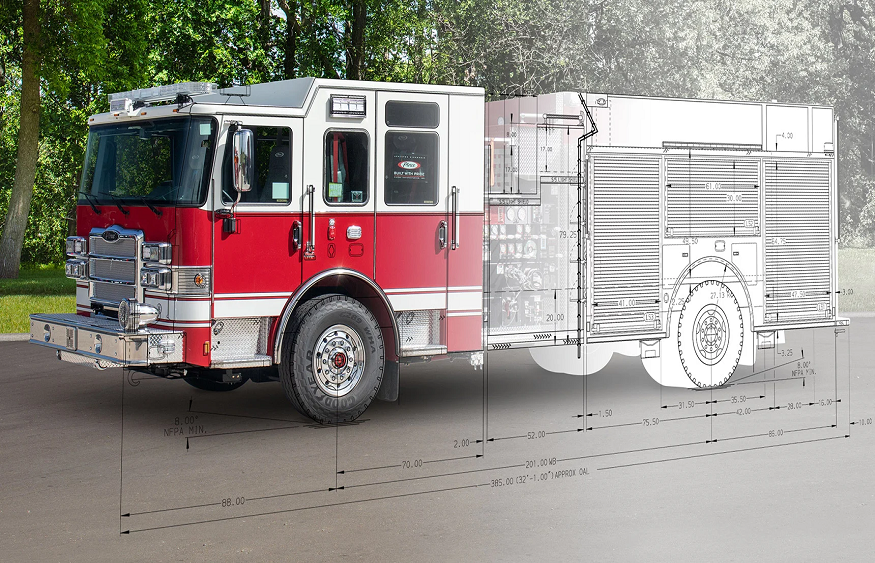
A Guide To The Different Types Of Lorry Braking Systems
Of course, every component of a vehicle is important, but the braking system is arguably the most critical. After all, you need to be able to slow down and quickly come to a stop if you want to avoid an incident.
This is particularly important on lorries and other HGVs, as they are far bigger and weigh much more than your standard passenger vehicle, even when they are empty.
But when fully loaded, the extra weight makes it even harder for these vehicles to slow down or come to a quick stop in case of an emergency.
That is why having a good understanding of the different lorry braking systems, and especially the systems in your vehicles, is essential to keep everyone safe.
In the guide below, we’ll take a look at the most common types of braking systems and pads used in lorries and larger vehicles.
Read on to find out more.
Hydraulic brakes
Hydraulic brakes in lorries are much like those used in most passenger vehicles. This system works by using fluid to transmit force when the brakes are applied.
What this means is that when the brake pedal is pressed down by the driver, the pistons in the cylinder cause fluid to flow into a pressure chamber.
This fills the available space, causing friction and braking torque to be generated. This slows the lorry down and eventually brings it to a stop.
Air brakes
Air brakes are some of the most commonly used systems in large vehicles, usually in lorries but also in buses. They rely on compressed air rather than hydraulic fluid and can be used with either drum brakes or disc brakes.
For these to work, an engine-mounted compressor will pressurise the air and store this in tanks until it’s needed.
Then, when the brakes are applied by the driver, the compressed air is released to apply pressure to the brake pads, which helps create friction and causes the vehicle to slow or stop.
Transmission brakes
Unlike the systems we’ve looked at so far, transmission brakes, as the name suggests, work on a vehicle’s transmission system rather than by applying pressure straight onto the wheels. As a result, these systems tend to favour drum brakes over disc brakes.
For this braking system to work, when the driver engages the brake, a switch connects to a solenoid that is mounted on the transmission.
What this does is applies forward and reverse gears at the same time. These two will then work against each other rendering the vehicle unable to move.
Disc brakes
We’ve briefly touched on disc versus drum brakes in this guide, but what is the difference between these two and how do they each work?
Well, disc brakes are made with a cast iron disc that is connected to the wheel hub. This system uses callipers to squeeze the pads against a disc or a rotor in the middle of the wheel to create friction.
It can be fluid or air that is used to apply pressure and cause the callipers to squeeze the pads. But either way, this decelerates the disc rotation and slows the vehicle down, eventually causing it to stop.
Drum brakes
While drum and disc brakes operate in a similar way, there are some key differences and most of these are structural.
Drum brakes are named as such because they use a hollow, cylindrical shape that resembles a drum.
When applied, the brake pads on the rim of the drum will expand against the rotating sides and cause friction, which will slow the vehicle down.
As air pressure is used in this system to cause friction rather than a mechanical effort, this can actually boost the braking action. This makes it far more suited to large, heavy vehicles like lorries.
Electromagnetic brakes
As this guide comes to a close, we’re going to take a look at one final braking system, one which might not be very common now, but is likely to grow in popularity in the future.
As we make the move towards electric and hybrid vehicles, new solutions must be found for quick and safe braking. Although lots of HGVs remain traditional, electric and hybrid lorries are already being made and lots of companies are beginning to make the shift.
In these vehicles, electricity, which is powered by a motor, is used to engage an electromagnetic force that will then push the brake pads together and cause friction. This brings the vehicle to a halt.
Because it is connected to an electric motor, this can provide instant stopping power, which is ideal for big vehicles like lorries and could be the braking system of the future.


